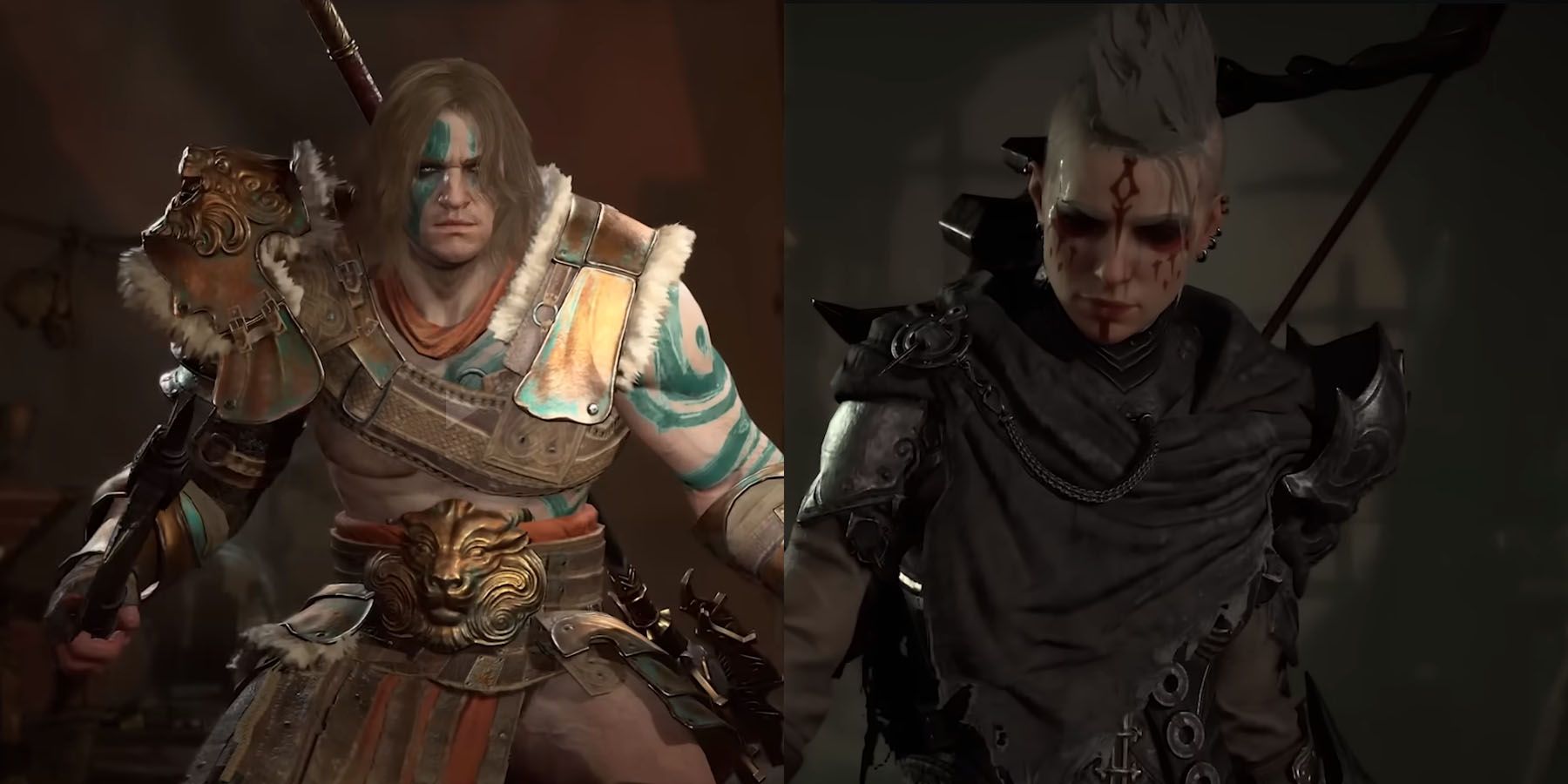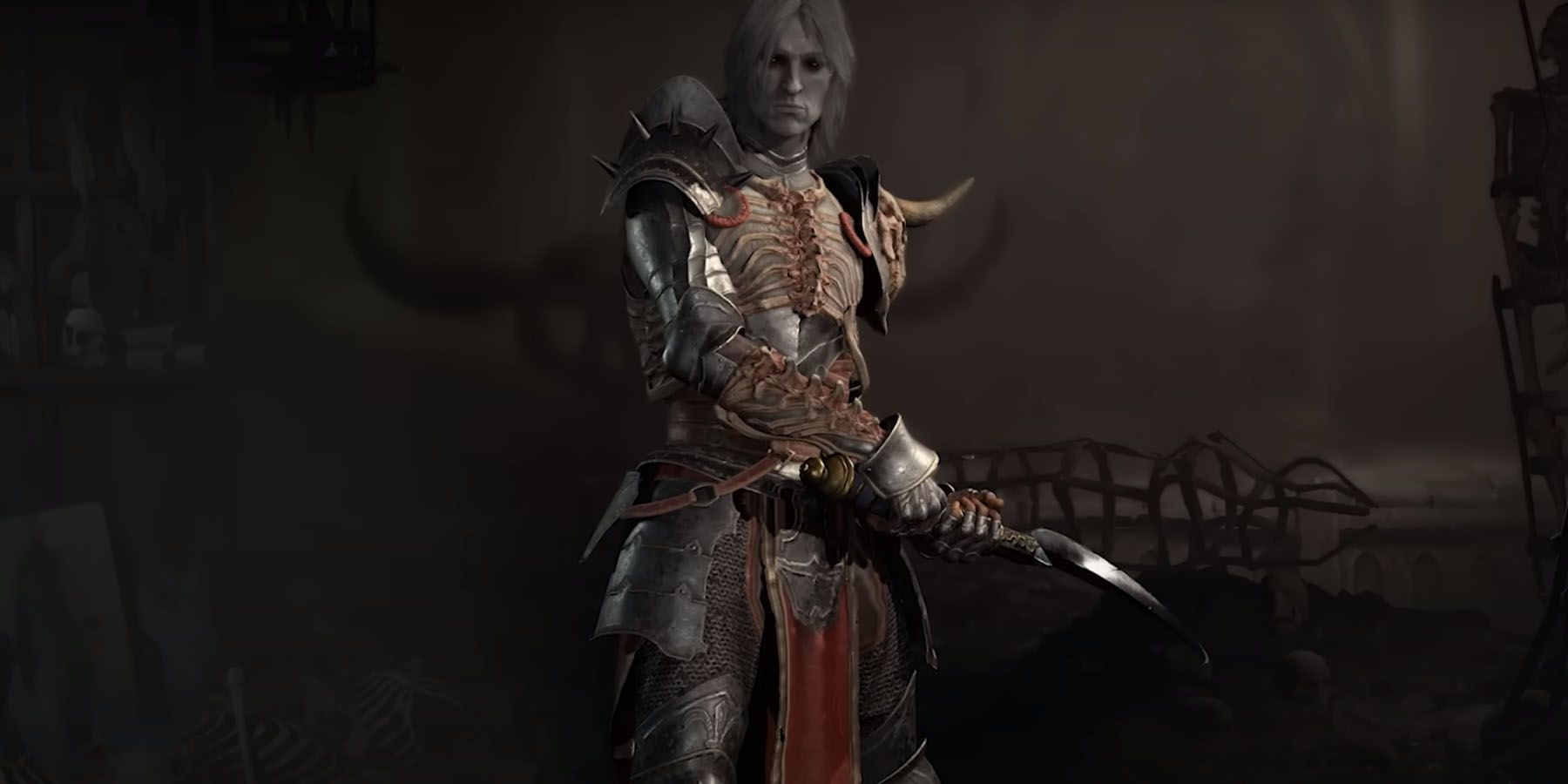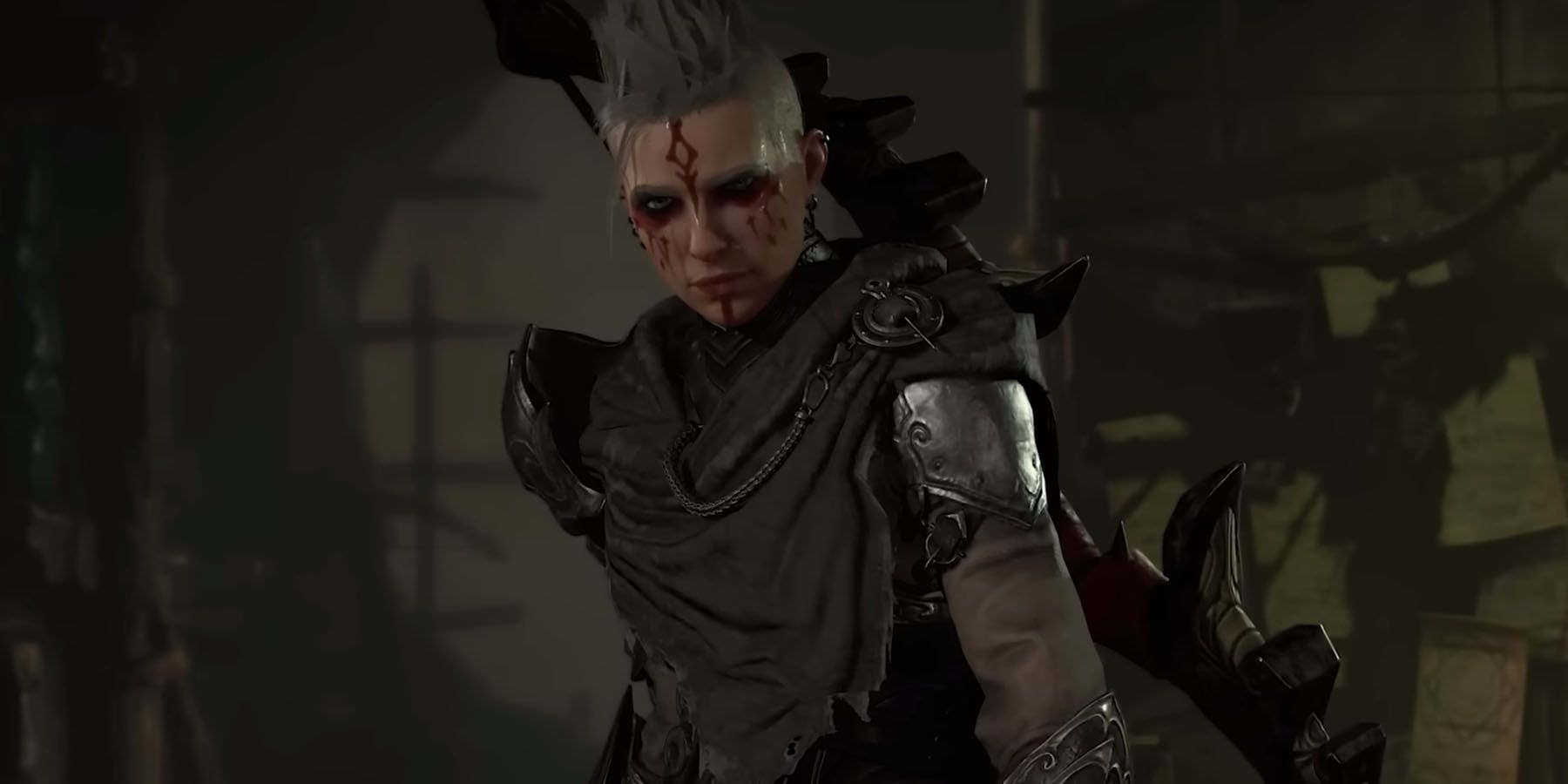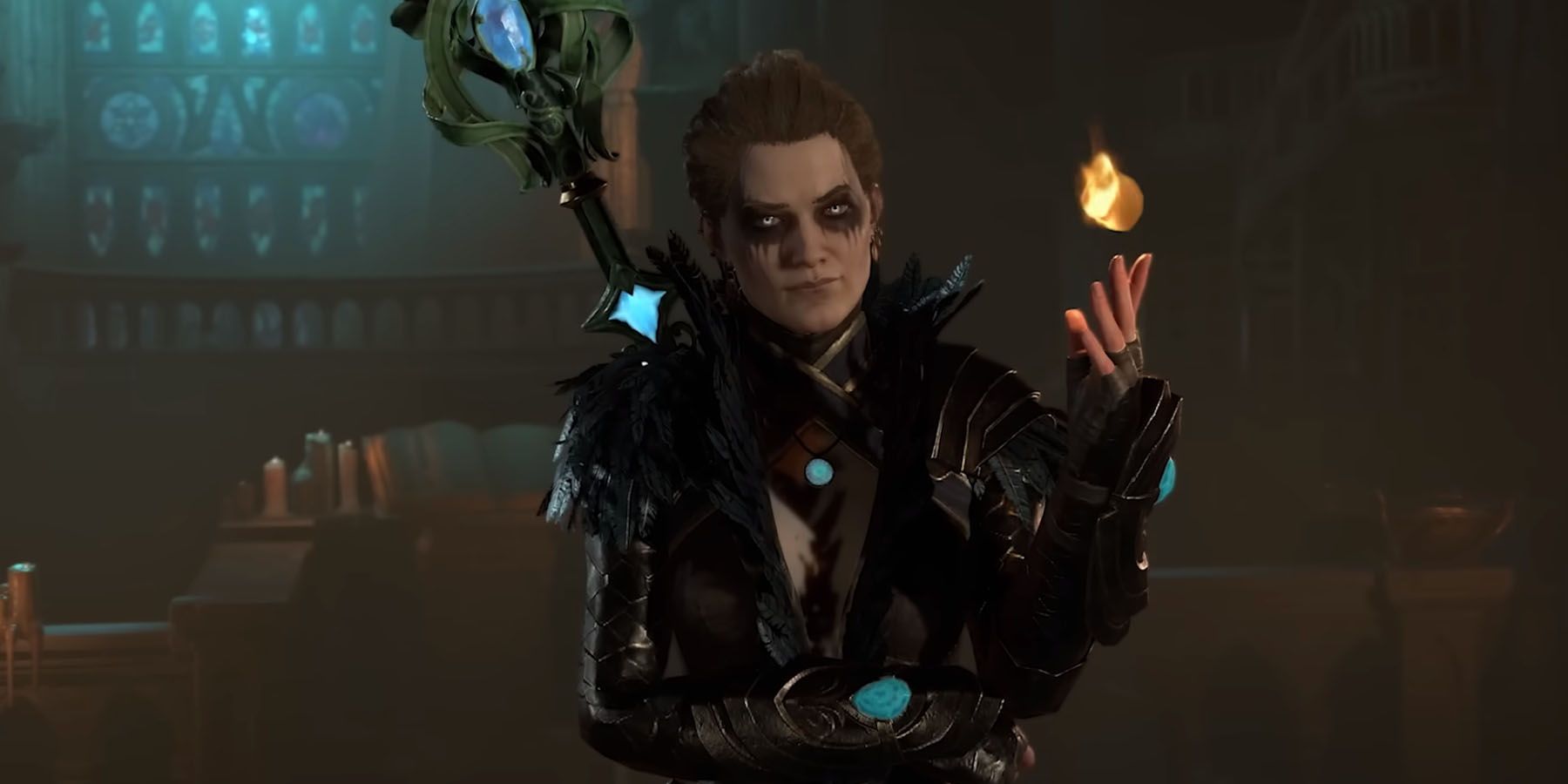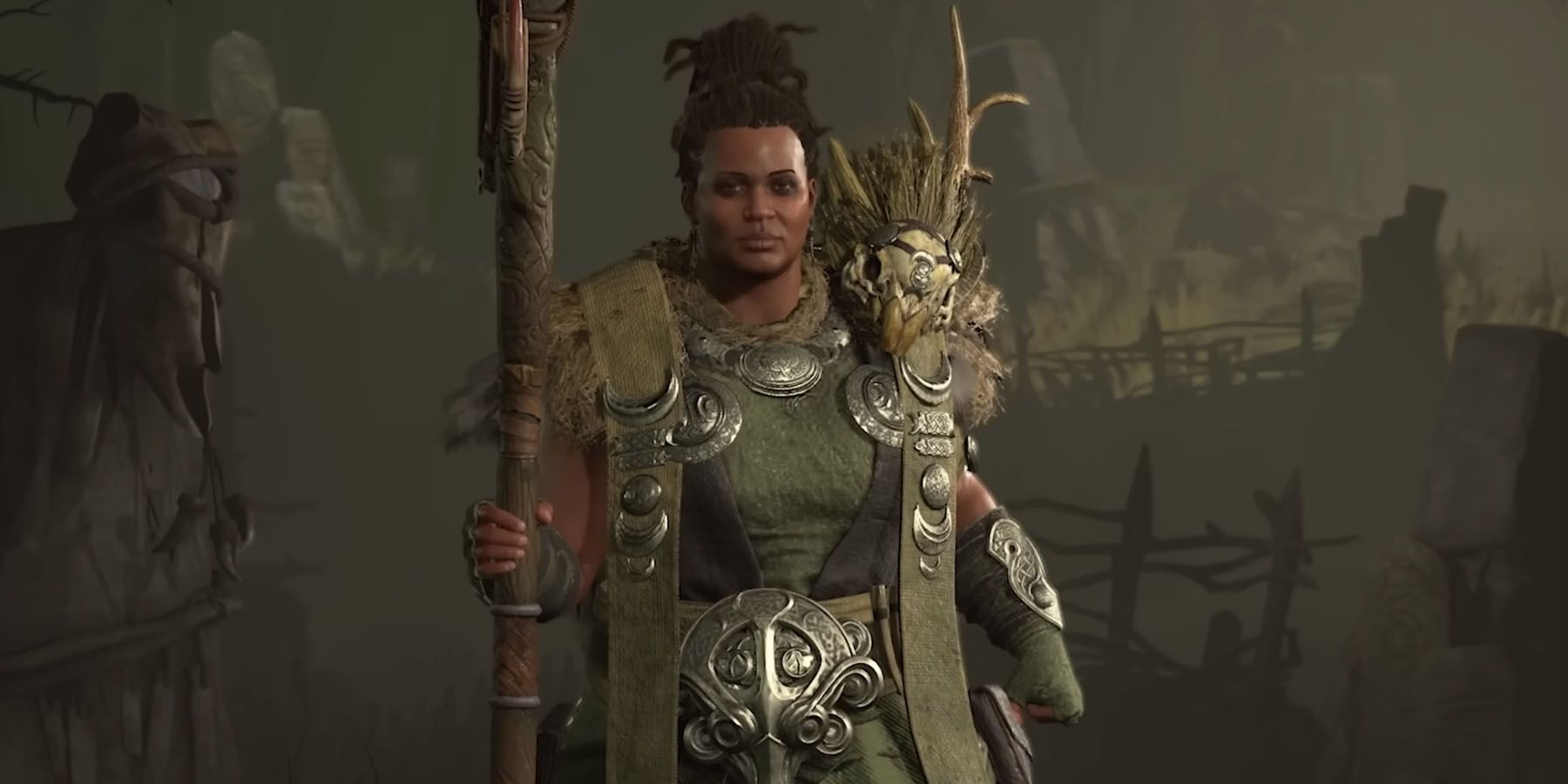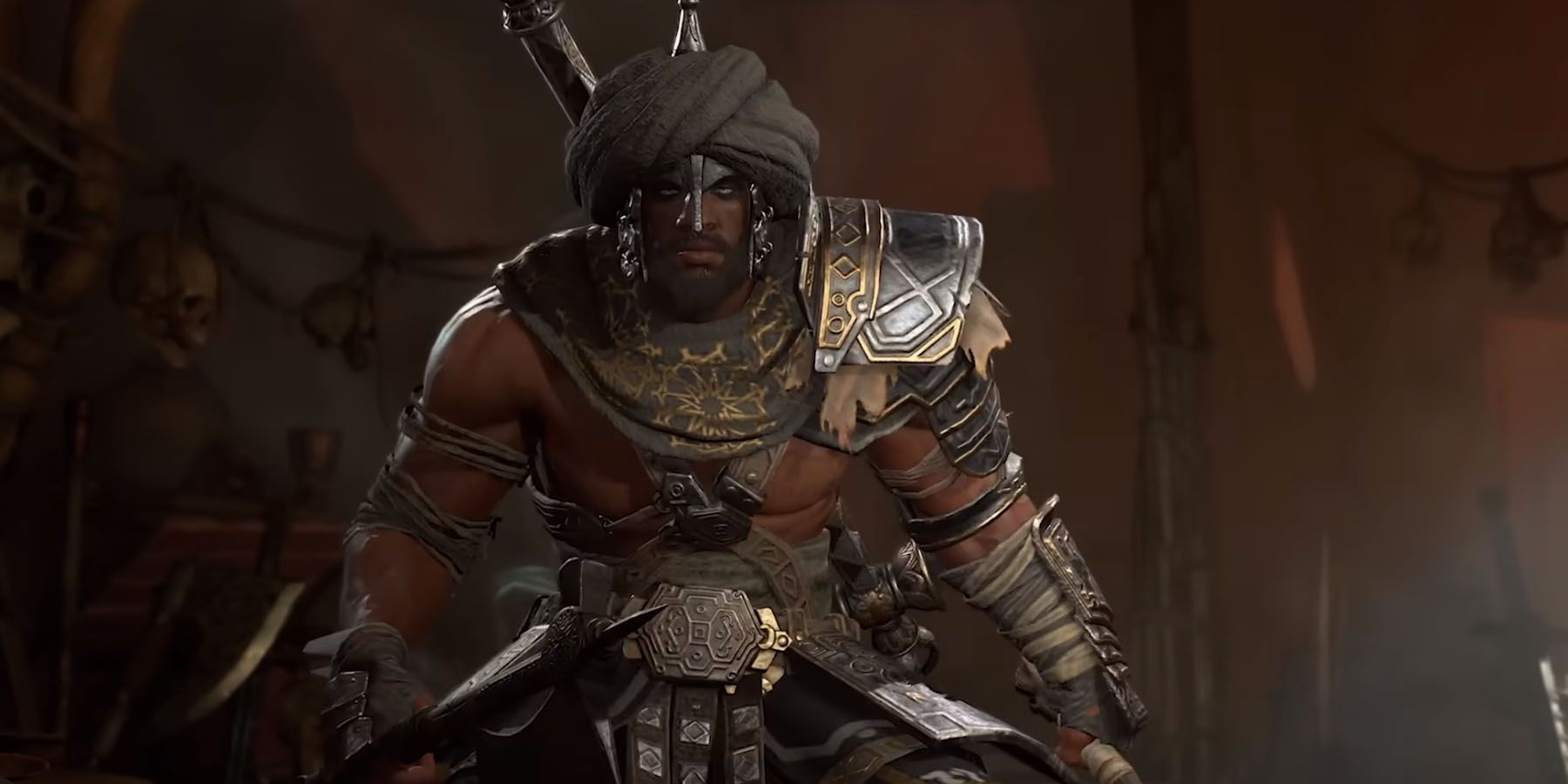Players who want to take a break from fighting Lilith’s forces in Diablo 4 may relish in the fight for supremacy in the Fields of Hatred, the site of the Diablo game’s PVP mode. Unlike the usual ARPG experience of the Diablo franchise, PVP in the Fields of Hatred is a fierce struggle between empowered forces of Hell and Sanctuary’s best fighters. Here, players can acquire some of the game’s best loot if their builds can withstand the relentless assault of Diablo 4 opponents.
With the game having released five starting Classes with extremely customizable kits, players have a myriad of ways they can try to contend in the Fields of Hatred. However, players looking for the most ideal builds in PVP may want to check how each of the game’s Classes adapts to aggressive player-killing strategies.
Necromancer: Blood And Bone Decimation
Maintaining a reputation for being one of the most technical Diablo Classes, the Necromancer in Diablo 4 rewards players who master its PVP potential with massive damage numbers. Unfortunately, the smaller area of the Fields of Hatred makes it unideal for them to use Darkness, Corpse, and Summons as maintaining a supply of corpses outside Hewed Flesh (Passive) and Decompose (Darkness) may be too much of a risk against both monsters and players. This is on top of their relative lack of defenses that make them weaker against melee specialists and faster nukers.
However, players can work around a non-summon Necromancer with pure damage kits. Necromancer PVP builds can capitalize on Fortified/Overpower-enhanced Blood Surge with Barrier-based Bone Storm for massive bursts. Bone Spirit can be paired with Bone Spear for standard nuking, while the latter can be replaced with Corpse Explosion (Corpse) for AOE. Players need to remember to balance these attack-heavy kits with the proper use of Blood Mist or Bone Prison, especially if they want exits against tougher foes.
Necromancer PVP Considerations
- Bones ramp up combat damage: As with other Necromancer incarnations, their Bone spells dish out decent AOE on top of the potential to control the battlefield. Large burst attacks include a skeletal entity chasing a target before exploding (Bone Spirit) and a whirlwind of bones (Bone Storm). When upgraded, Bone spells can cost more Essence for bigger DPS (Imperfectly Balanced), deal higher damage via Vulnerable (Initiate’s Blood Splinters, Supernatural Bone Spear, Evulsion), have higher crit chance (Serration), and reduce CDs on certain resource caps (Compound Fracture)
- Defenses add control: Protective measures in the Necromancer’s kit can dictate the flow of battle, such as enemy cages that need to be destroyed separately (Bone Prison), a CC-breaking speed boost with healing (Blood Mist), and even buffs that make enemies deal less damage up close (Death’s Embrace). In Diablo 4 team play, the lack of hard defenses may allow the Necromancer to focus on a more combat-heavy role.
- Bloody sustains: The Necromancer becomes a devastating foe at AOE with the right Blood kit, especially with synergized spells. While Hemorrhage and Blood Lance are typical multi-hit attacks, Blood Wave (Ultimate) comes with a nifty Knockback and Slow. The potency of Blood spells may even extend to sustains, such as Fortified health shields (Initiate’s Hemorrhage, Supernatural Blood Surge, Drain Vitality) and even Life siphons (Enhanced Blood Surge). Some Passives may even improve heals at lower Life (Gruesome Mending) and boost damage at higher health (Coalesced Blood, Tides of Blood).
- To Summon or not to Summon: While the Book of the Dead facilitates Summons to improve the Necromancer’s overall firepower, PVP’s innate lack of corpse generation still works to the advantage of the Necromancer. With Sacrifice, the Necromancer can block their summons to receive permanent buffs that can improve a more straightforwardly-aggressive build, such as buffs against Vulnerable foes (Cold Mage), improved Shadow Damage (Skeletal Reapers), increased Max Essence (Shadow Mage), and boosted Max Life (Blood Golem).
Rogue: Speed Burst Entourage
What the Rogue lacks in magical prowess they make up for with deadly efficiency with an assortment of weapons. In turn, Diablo 4 gameplay for the PVP Rogue relies heavily on speed to jump the gun on opponents. They carry over their high burst damage in PVE over to PVP, with CC-breaking Unstoppables (Concealment, Shadow Step) being options to use on the offense. Mobility makes the Rogue rather annoying to fight, but their lack of defenses means getting caught by a tankier Class like the Barbarian or Druid may be game over for them.
However, enemies drop dead rather quickly when Rogues make the right setup. A fully-kitted Puncture (Basic Marksman) Slows an enemy and procs Vulnerable, leaving them wide open for massive damage courtesy of Exploit (Passive)-improved Twisting Blades (Core Imbueable Cutthroat) with a Death Trap finisher. Rogues may even spice things up further with Imbuements, with Poisons taking full advantage of the Fields of Hatred’s DOT boosts. Dash remains a nifty repositioning tool, while Shadowstep is an emergency CC-break to gain distance.
Rogue PVP Considerations
- Punishing strikes: A Rogue's weapon of choice may be tailor-fit with benefits that change their combat styles. Going up close with Cutthroat (swords, daggers) can boost damage reduction and movement speed (Momentum), whereas scoring crits with Marksman (bows, crossbow) paves the way for even more crits. Attacking opponents in melee can increase Attack Speed and boost damage against CC'd foes (Close Quarters Combat), while being Trap-reliant may Stun enemies and reduce Trap CDs further (Exposure).
- Poison is king: Among available Imbuements, Poison Imbuement is the most punishing in PVP due to the Fields' DOT boosts. On top of Upgrade 2 having a chance of applying double the Poison damage, some parts of the Rogue's kit dispense Poison rather liberally. For instance, up to four Poison Traps can not only Knockdown opponents (Enhanced) but may even reset Imbuement CDs (Upgrade 1). Passives can amplify Poison damage (Deadly Venom), make enemies deal less damage (Debilitating Toxins), and boost the Rogue's Attack Speed per Poisoned foe (Alchemical Advantage).
- Shadow flexibility: Shadows add a bit of flair to the Rogue's arsenal, with Shadow Imbuement not only granting explode-on-kill to enemies but also making opponents they hit become Vulnerable (Upgrade 1). Passives also enhance the performance of Shadow damage with a chance to Stun (Shadow Crash) and Energy regen (Consuming Shadows). Players may even create a Death Trap (Ultimate) that may pull enemies inwards (Enhancement) for an opening to burst AOE, while Shadow Clone (Ultimate) is a weaker Rogue decoy that copies all the player's moves.
- Rush in and out of combat: A Rogue's combat efficiency is tied to how fast they move around the battlefield. When defending, they can stop enemies from using skills via Daze (Smoke Grenade), build distance with Slows (Caltrops), or inflict damage reduction via Shadows (Dark Shroud). On the offense, Rogues can rush opponents up close (Dash) or even punish CCs via Unstoppable (Concealment, Shadowstep). Some Passives also offer movement benefits, such as increased damage at a set distance (Impetus), Energy regens when moving (Adrenaline Rush), boosting Dodge chance when using skills (Agile), and getting health when Stealthed (Mending Obscurity).
Sorcerer: Elemental Destruction
While the high-risk, high-reward gameplay of Sorcerers makes them as fragile as they are powerful in Diablo 4, players of the Diablo sequel in tune with their spellcaster’s playstyle can transform them into PVP juggernauts. Due to their lack of solid base defense, PVP Sorcerers rely heavily on Chill/Freeze to stop enemies in their tracks and go in big for the kill. In turn, usual Sorcerer builds revolve around Frost Nova stuns with a Hydra or Ice Shards finish.
Sorcerers stuck in a jam can easily break CC with Teleport and Conduit on top of defensive measures such as Frost Armor and Fire Shield. With the right rotations, Sorcerers can get in and out of battle relatively quickly. Unfortunately, Druids and Barbarians trapping them in melee can spell a quick death, especially if they don’t get their Teleports in time.
Sorcerer PVP Considerations
- Crowd control finesse: Chill effects leading up to Freeze give Sorcerers access to two CC effects in a single spell: low movement speed (Chilled) and stuns (Frozen). The majority of their Cold kit capitalizes on this mechanic, courtesy of spells such as Frost Bolt, Frozen Orb, Ice Blades, Frost Nova, and Blizzard. On top of damage-boosting Sorcerer Passives, these spellcasters can boost Chill dealt per attack (Cold Snap), buff damage against Chilled and Frozen foes (Frostbite, Chill to the Bone), and reduce damage taken from affected enemies (Numbing Cold).
- Big damage options: True to their nature as glass cannons, Sorcerers have multiple bread-and-butter offensive spells. Usual combos in PVP include an insta-Freeze (Frost Nova) followed by Hydra (Fire), Ice Shards (Cold), or Nova (Lightning), all of which can be buffed further with stackable damage-boosting Passives such as Precision Magic, Inexorable Reach, and Frostbite.
- Concentrated damage: Sorcerers already dish out immense damage with AOE-heavy Lightning spells and Burning-inducing Fire spells, but they become much deadlier in tandem with mechanic-enhancing Passives. For instance, players can further enhance Burning with flat DOT increase (Endless Pyre) and increased Fire damage (Conflagration). Likewise, Lightning can get more combat effects such as improved Mana regen (Overcharge), Stun chance (Convulsions), enemy damage reduction (Stagger), and higher damage on melee (Lightning Mastery).
- Anti-crowd control defenses: Protections available to the Sorcerer get them out of pesky situations, with Teleport and Conduit not only generating distance but also breaking crowd control. They can also alternate between anti-CC with self-AOE (Flame Shield) or no-CD damage absorption (Ice Armor), as well as a 4-second Immunity with Chill (Deep Freeze). When timed properly, a Sorcerer can have spammable defenses with Elemental Attunement (Passive) that reduces CD of Defensvie Skills (Teleport, Flame Shield) with criticals.
Druid: Shapeshifting Battering Ram
Despite a rather weak start at launch, the Druid rises as one of the most heavy-hitting Classes in the Diablo 4 experience. The Druid offers a violent middle ground between the glass cannon Sorcerer and their aggressive brethren among the Barbarian, especially with Forms that transition between utility-centric Human, tanky Werebear, and fierce Werewolf. Their only perceivable weakness is running out of steam against Barbarians that thrive in near-death situations, especially when the latter gets past the Druid’s defenses.
A Druid can counter the usual high-speed and high-damage PVP build with the Werebear’s innate tankiness, making the process of building combos around the Form’s Pulverize (Spirit) AOE to punish multiple opponents up close quite a popular setup. Moreover, the Druid’s PVP efficiency has to do with maximizing core mechanics that give them a life buffer (Fortify), reduce enemy Life based on their maximum (Crushing Blow), or boost damage taken by enemies (Vulnerable).
Druid PVP Considerations
- Natural defenses: On top of the shapeshifted Druid’s sheer damage potential are opportunities to transform them into defensive juggernauts, which are further enhanced by nifty Druid Passives. Players can do this through Life restored per Spirit used in Earth/Storm skills (Natural Balance) and plain damage reduction boosts (Ancestral Fortitude, Heightened Senses, Iron Hide). Not to mention, the Werebear has a natural shielding ability via Fortify (Maul), boosting their defenses further.
- Damage incentives: Unlike other Classes that receive a flat damage increase, the Druid can have these benefits stack through proper rotations. For instance, players can enjoy increased Criticals and next-skill damage during shapeshifts (Feral Spirit, Quickshift). They can also boost their damage when attacking nearby enemies (Predatory Instinct), as well as when using Earth and Storm abilities (Natural Resonance, Fury of Nature, Earthen Might) on Vulnerable (Elemental Exposure, Perfect Storm) foes and Crushing Blow (Primal Resonance) sufferers.
- Crowd control punishers: High-speed PVPs make crowd control slows a viable threat, with the Druid’s kit enabling them to dish out various CCs on certain conditions. These include skills having a chance to reduce attack speed (Debilitating Roar), Immobilize (Earthbind), Stun (Petrify, Trample), and Knockback (Cataclysm, Boulder, Cyclone Armor) nearby enemies. Druids even have a nifty anti-CC Unstoppable that also Absorbs damage (Earthen Bulwark), with an accompanying Unstoppable Werebear Ultimate (Grizzly Rage).
- Crowd control boosts: Druids also have the means of improving their crowd controls, punishing enemies further. These include Earth skills having a chance to Immobilize enemies (Earthbind), a base damage boost to CC’d enemies (Scent of Blood), an improved flat Knockdown chance on hit against Slowed enemies (Overpower), and a base increase to CC duration (Undergrowth).
Barbarian: Rage Is The Answer
What makes the Barbarian one of the deadliest PVP Diablo Classes is its accessible toolkit, since enemies become punching bags as soon as Barbarians close in on them. Straightforward is key here, as the Barbarian’s damage-heavy skills emphasize pummeling opponents to death before they get to strike back. In turn, much of the Barbarian’s Fury Skills become the centerpiece of PVP builds, with Hammer of the Ancients alone being usually enough to finish enemies with the right buffs.
Moreover, what perhaps makes the Barbarian much deadlier is their toolkit demonstrating how sheer tankiness can outlast most foes. At its core, PVP-based Barbarian builds can reach nigh-OP levels as they can prioritize powering through crowd control, inflicting high damage over time, or sheer firepower.
Barbarian PVP Considerations
- Boost damage: The Barbarian’s damage-heavy kit can be improved further with both the right skills and talents. Barbarians who want damage over time can rely on Rupture (Weapon Mastery), Rend (Fury), and Blood Thirst (Passive Talent) for circumstantial Bleed. Likewise, Walking Arsenal (Ultimate Passive) can boost the Barbarian’s overall damage whenever they use different weapons.
- Get up close and personal: Despite the Barbarian being a melee Class, they do have Brawling Skills that control their playstyles at any range. Depending on a Barbarian’s needs, they can generate distance (Kick) or zoom unto targets who prefer to stay from afar (Leap, Charge). Likewise, they can even pull enemies to close the gap (Primal Axe). To punish foes even further, Barbarians can increase their damage up close (War Cry) or even temporarily Sow nearby enemies (Concussion).
- Stay in the fight: The Barbarian’s already-tanky kit is made even tougher with his Defensive Skills. Their nifty CC-immune Unstoppable (Rallying Cry) can help Barbarians power through stuns, with an alternate option (Unstoppable Force) offering the same thing with a damage boost upon Berserking.
- Get a free revive: What makes them ridiculously powerful is Undying Rage, which is essentially a free revive if the Barbarian kills an enemy within five seconds after taking fatal damage. Timing this perfectly can score a clutch win in PVP.
Diablo 4 is available for PC, PS4, PS5, Xbox One, and Xbox Series X/S.

